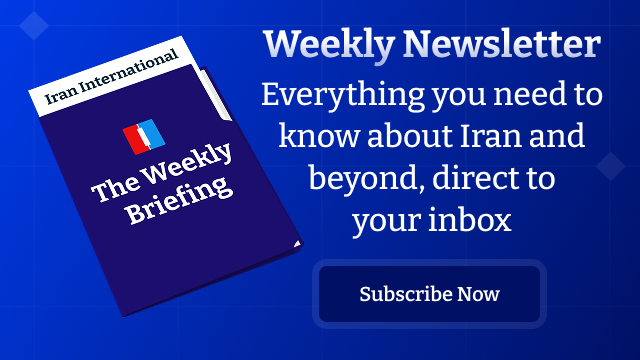In an interview with Iran International, Iranian-Canadian Javad Soleimani, who lost his wife Elnaz Nabiyi in the shoot-down, explained that the film would incorporate the families' own 2021 fact-finding report and address key developments since.
The Islamic Revolutionary Guard Corps’ (IRGC) Aerospace Force shot down the Ukrainian airliner shortly after takeoff from Tehran, using two surface-to-air missiles on January 8, 2020.
Iranian authorities initially denied responsibility, only admitting to it three days later when confronted with intelligence and photographic evidence. Tehran has since continued to assert that the incident was the result of "human error."
Among those killed were 55 Canadian citizens and 30 permanent residents, as well as nationals from Iran, Ukraine, Sweden, Afghanistan, and the United Kingdom.
Soleimani and other families have since urged Canada and the affected countries to ensure Tehran faces justice. Expressing his frustration with Canada's response so far, Soleimani said, “Canada should have done a lot, and faster… it has been very hard on the families.”
“The most important issue bothering the families is that we still don’t know what happened that night. The Islamic Republic has not cooperated,” Soleimani said.
Soleimani argued that there is a lack of transparency and the withholding of critical information, including findings from the flight's black boxes. He told Iran International that countries in the international coordination group—Canada, Sweden, the UK, and Ukraine—have access to this information but have not shared it with the families.
There are currently three international judicial pathways underway over the downing, with Canada, Ukraine, Sweden, and the UK pursuing two.
In their case before the International Court of Justice, the four countries argue that Iran negligently and intentionally allowed Flight PS752 to be shot down, covered up the incident, mishandled the investigation, and harassed victims' families.
Ukraine, in its statement on the anniversary, said the countries would take steps to hold Tehran accountable before the International Civil Aviation Organization (ICAO) – the UN aviation body – in the coming months.
Separately, the families have taken their fight to the International Criminal Court (ICC). The Association of Families of Flight PS752 Victims has submitted a legal request to the ICC prosecutor’s office, seeking to expand the ongoing investigation into alleged war crimes in Ukraine to include the Iranian missile strike that brought down Flight PS752.
Soleimani says the Canadian government did not back the families in this path. "The least Canada could have done is write a support letter, but they have not done that," he said.
The investigative film, titled “January 8, Frozen” is a way for the tragedy to be “visualized” and written into the history books in a significant way, Soleimani said. He also says the victims' families have united behind the film to raise awareness and highlight their ongoing efforts.
While Canada met one of the families’ major demands by listing the IRGC as a terrorist entity in 2024, Soleimani says there are many demands yet to be fully addressed.
He criticized the governments and the RCMP’s continued reluctance to open a criminal case, saying that, alongside Ukraine’s own criminal case, the two countries could have achieved much more.
When asked whether he believes the prorogation of Canada’s parliament after Prime Minister Justin Trudeau’s resignation would impact the pursuit of justice, he said he was worried.
"Hopefully, it will not have an impact on the case before the ICJ,” he said, adding that “Whoever comes into power, we need more attention on PS752.”
Scheduled for release by the end of summer 2025, the film currently features several mothers of victims and will include contributions from more of the victims' families.
"If we don’t have the truth, there cannot be closure for any of the families. Justice can only happen, when there is also truth,” Soleimani said.


















